Today I’m going to talk about a 50th anniversary.
Of what?
Back in 1954 — May of that year — the Supreme Court decided that segregated public schools were unconstitutional. It was called the Brown versus Board of Education decision. A lot was made of it. Books, for instance.
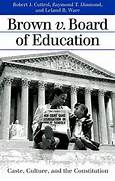
Even Norman Rockwell memorialized the instances of small black kids being escorted into schools. To protect them from those people who opposed desegregation.
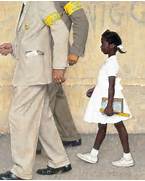
Right.
Well, in the year 2004 — 50 years later — there was a movement to remember that decision. A 50th anniversary celebration.
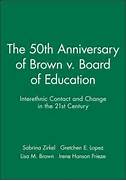
And AARP wanted to be a part of it.

How?
AARP-Maryland called meetings of volunteers they thought would be interested in participating. So I joined such a meeting in the Baltimore area.
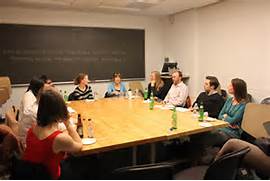
The moderator of the meeting briefed us on what we would do. Go to community centers, for instance, and just talk up the significance of the event 50 years ago.
I see.
I’m not sure how the other volunteers did it. I’m just telling you what I did.
Okay.
Now here’s where what I did would differ from the rest. During the meeting I just happened to mention that, back in the Sixties, I was active in the civil-rights movement and thar I,was in fact a Vice President of the Anne Arundel County branch of the NAACP.
Did that surprise them?
Quite a bit. A white guy with the NAACP? Different. And that led to something else. I’ll get to that later.
Okay.
So I was asked to visit several community centers and talk to the people about Brown versus the Board. So I did. And I mentioned Jackie Robinson. How I once met him. And that they could rent a movie about him. And starring him.
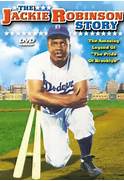
The Jackie Robinson Story. Remember, this was back before the movie 42 came out.
Right.
And I talked about how the movie shows him overcoming the prejudices he ran into.
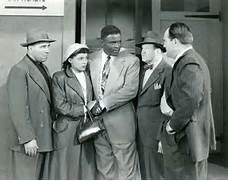
But I also wanted to include some hopeful signs that our society was moving in the right direction. One was about the Little Rock Nine. Remember them?
Nine students?
Right. In Little Rock, Arkansas. 1957. Central High School. An attempt to integrate the school was met by much Opposition.
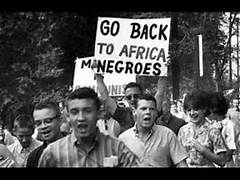 .
.
It took the intervention of President Eisenhower and the National Guard to get the students into the school. But it finally happened.
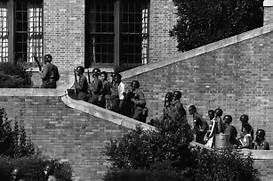
Now here’s the glimmer of hope that came out of the incident. One of the classic photographs taken then was of angry students harassing a black girl. Especially one white girl doing it.
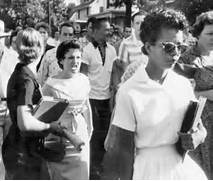
I remember seeing that one. Reprinted over the years.
Right. Well, the black girl minding her own business was Elizabeth Eckford. And the white girl behind her and yelling at her was Hazel Bryan.
Now here’s the hopeful note. Years later the two got together and came to know each other as adults. And they were photographed together in front of their old high school.
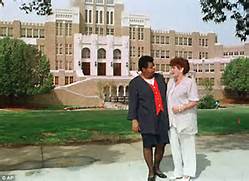
So there is hope for all of us.
I think so. Anyway, these two photographs were reprinted many years later, and I clipped them out of the paper. And I brought them with me to show to the community groups I spoke to. I think they made a good point.
However, there was one glitch in the process. One of the Baltimore groups I spoke to turned out to be in a Spanish-speaking community.
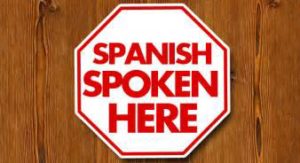
I wasn’t warned ahead of time, so I didn’t have a chance to brush up on my high-school Spanish. In explaining the two photographs, I remembered that “friends” in Spanish is “amigas.” Female friends. But I didn’t know how to describe the angry high-school girl. I didn’t know the words.

What did you do?
Fortunately, at the meeting there was a young girl — quite young — who could translate for me.

So I was saved. But it was a predicament.
Now here’s the other part I said I would get to. Some time later, after all these community meetings were over, I got a call from the moderator of that first meeting of volunteers.
Okay.
He said there was something else I could do because of my past experience with civil rights in the Sixties.
And that was?
He said they wanted to make a movie to be shown on Maryland Public Television. A movie called People of Brown. A movie about Maryland residents doing various activities related to the Brown versus Board decision. And, since I was a white guy volunteering with the NAACP, he thought that would be a good part of it.
And?
So he sent a crew to my house to get my story. After the TV technician set up his equipment,

the interviewer asked me to tell my story.

What did you tell him?
Pretty much what I told you before. About learning of the segregated schools around me. And joining the NAACP. Like that.
And they made the movie?
Yep. People who were involved with the project were invited to a previewing of the movie.
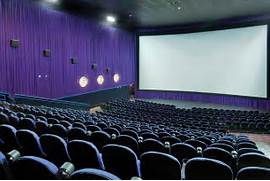
And then we were each given a videotape of the movie. Pretty neat, I thought.